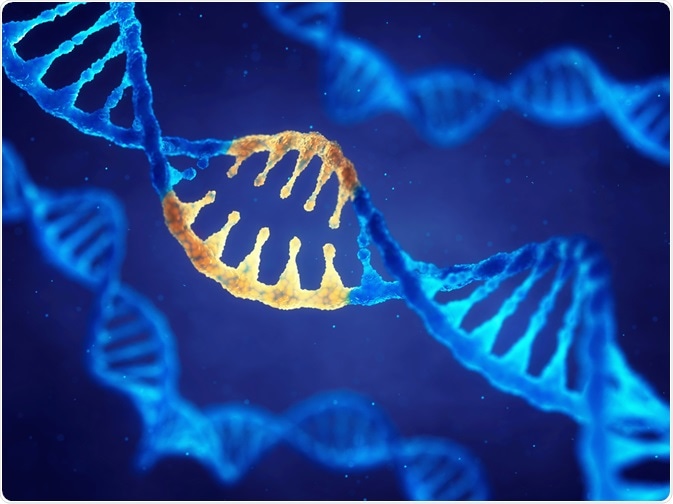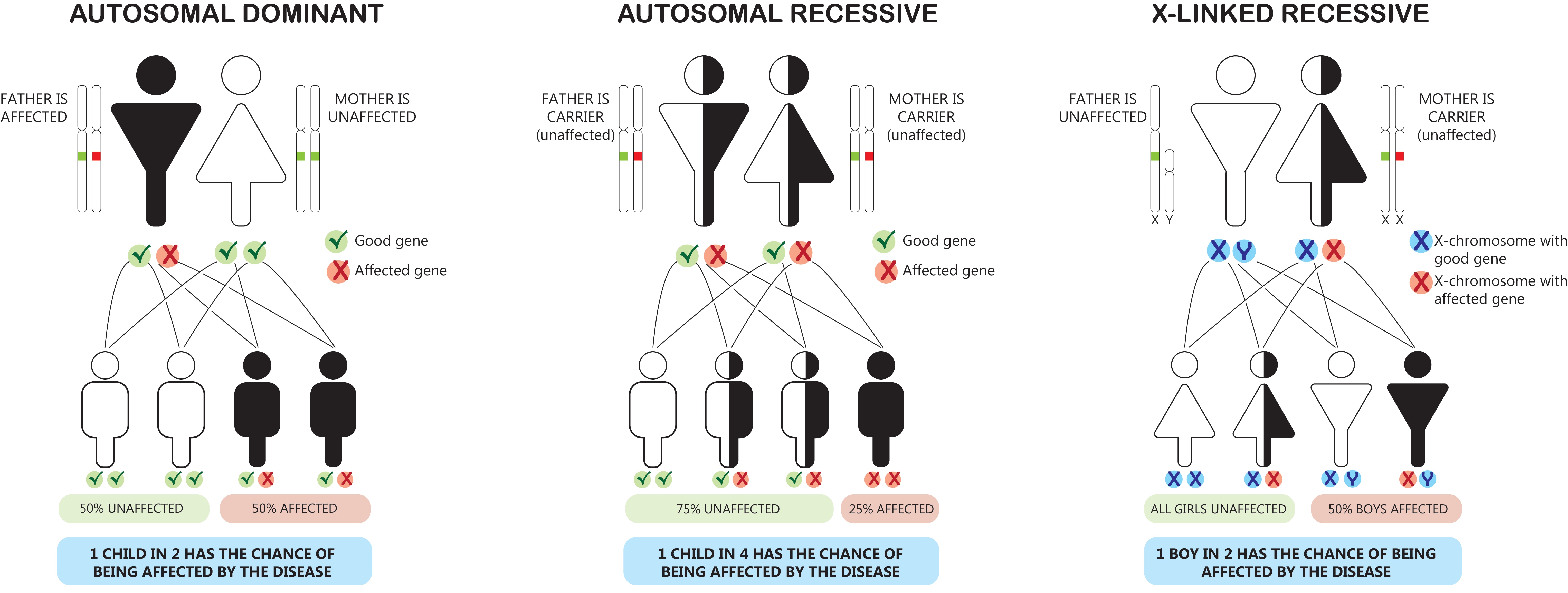A human genome, which represents a complete set of deoxyribonucleic acid (DNA), can be viewed as a blueprint for all cellular structures and activities. It is estimated that our genome contains 25,000 protein-encoding genes, and knowing its sequence can be used to match different disease phenotypes to their corresponding genes.
Human genetic diseases can be placed into one of five categories: single gene disorders (characterized by mutations at individual loci), multifactorial and polygenic disorders (characterized by the interaction of multiple genes, sometimes in concert with environmental factors), chromosomal abnormalities, mitochondrial inheritance, as well as diseases of unknown origin that seem to run in families.
Mendel’s studies of inheritance patterns in pea plants represent a solid foundation for our current understanding of single gene diseases in humans. When a certain gene can be pinpointed as a cause of a disease, we refer to it as a single gene genetic disorder or a Mendelian disorder.
 Image Credit: nobeastsofierce / Shutterstock.com
Image Credit: nobeastsofierce / Shutterstock.com
Types of single gene disorders
The occurrence of a disease caused by a single gene mutation may occur in several main patterns or modes. These are grouped according to whether the trait is sex-specific (generally X-linked) or not (autosomal). As a rule, single gene disorders (also known as Mendelian traits or diseases) are relatively uncommon.
The occurrence of a disease caused by a single gene mutation may occur in several main patterns or modes. These are grouped according to whether the trait is sex-specific (generally X-linked) or not (autosomal). As a rule, single gene disorders (also known as Mendelian traits or diseases) are relatively uncommon.
Autosomal dominant single gene disorders occur in individuals who contain a single mutant copy of the disease-associated gene. The affected individuals are heterozygous for the gene, which means that inheritance of only one copy from either an affected mother or an affected father is sufficient to cause a disease; hence the presence of a single nonmutant or “wild-type” copy of the gene is not enough to prevent the disease.
Another common mode of inheritance is autosomal recessive single gene disorder, where two copies of the mutated gene are needed in order to have the disorder. They inherit one allele from the mother and one from the father, the risk of transmission of the disorder is 25%, while half of the unaffected offspring will be carriers for the gene
X-linked dominant inheritance follows a pattern similar to autosomal dominant inheritance except that more females are affected than males, although such disorders are very rare. X-linked recessive conditions generally occur only in males, as second X-chromosome of females provides a normal allele, but males who inherit the recessive gene on their sole X-chromosome will be affected. Extremely rare Y-linked single gene diseases are always passed on from affected fathers to their sons.

Inheritance of single gene disorders. Image Credit: Katrien Francois / Shutterstock.com
Examples of single gene disorders
Huntington's disease is a progressive neurodegenerative disorder that exhibits autosomal dominant inheritance. The children of the affected individuals have a 50% risk of inheriting the disease, which can manifest with uncontrolled movements, emotional problems and loss of thinking ability.
The late onset of the disorder (35-45 years of age) means that many affected individuals have kids before they are aware of their condition. Other examples of autosomal dominant diseases include Marfan syndrome, neurofibromatosis, retinoblastoma and polydactyly.
Phenylketonuria represents a prominent example of a single gene genetic disorder with an autosomal recessive inheritance pattern. It is characterized by an inability of the body to utilize the essential amino acid phenylalanine due to a mutation in the phenylalanine hydroxylase (PAH) gene. As a result, the buildup of phenylalanine can eventually cause mental retardation and abnormal behavior. Other examples of autosomal recessive diseases include cystic fibrosis, sickle cell anemia and Tay-Sachs disease.
Hemophilia A is a disorder where the blood cannot clot properly due to a deficiency of a clotting factor called Factor VIII. It exhibits an X chromosome-linked recessive pattern of inheritance, so men with a mutant copy of the gene will always have the disease, whereas women are rarely affected by it. Other examples are Duchenne muscular dystrophy and glucose-6-phosphate dehydrogenase deficiency.
X-linked dominant conditions are rare but do exist. Heterozygous mutations in the X-linked MECP2 gene result in Rett syndrome – a severe neurodevelopmental disorder of young females. A nonobstructive spermatogenic failure that leads to infertility problems in males is an example of a Y-linked disorder.
Single gene disorders | Mendelian disorders | Pedigree analysis
References
Further Reading
Last Updated: Nov 17, 2022